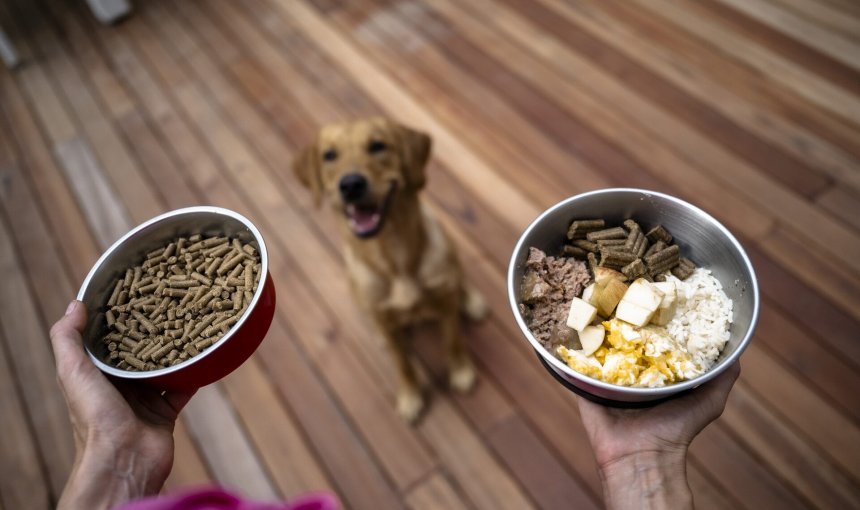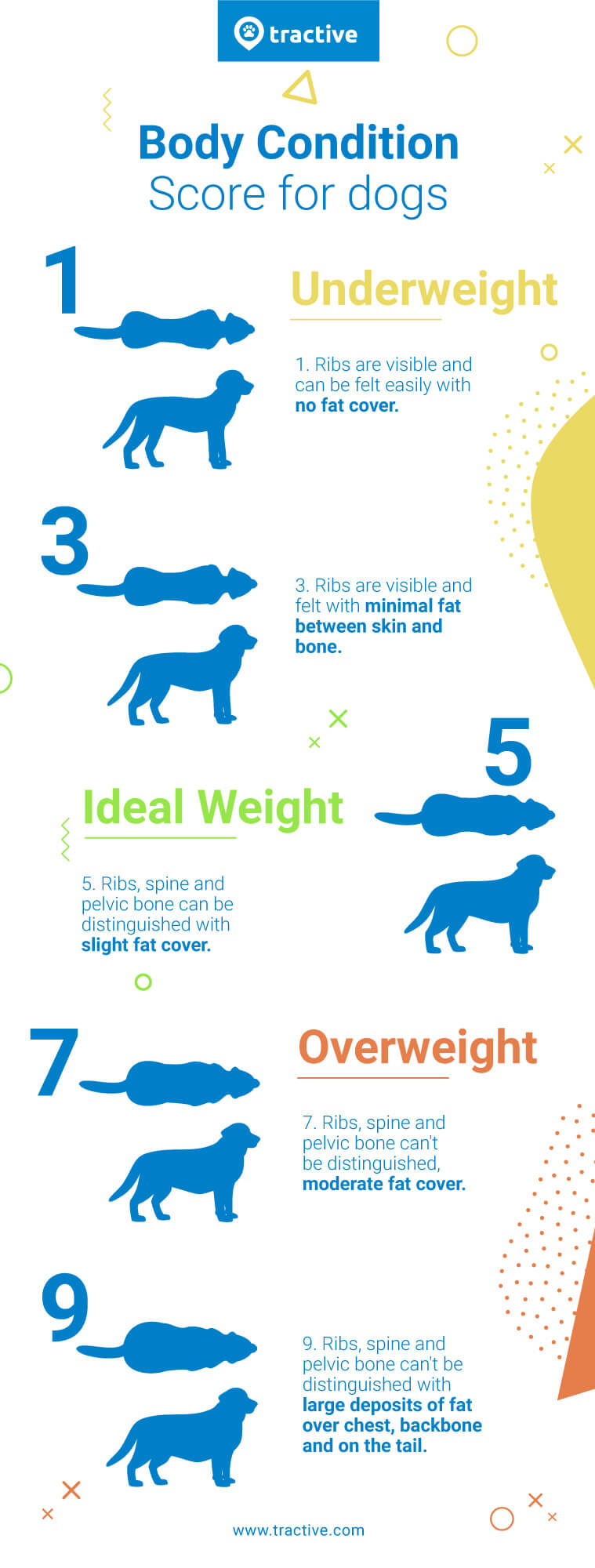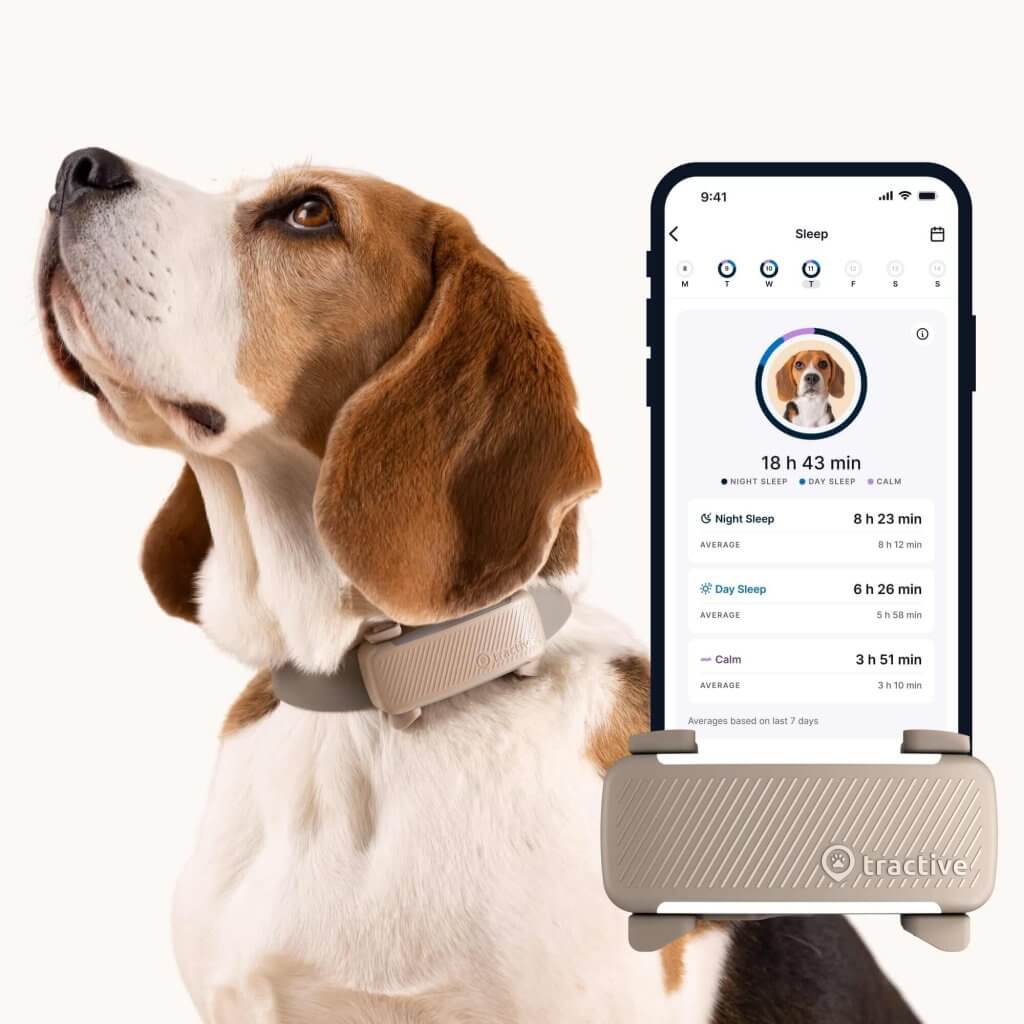How Much Should I Feed My Dog? (And How Often?)
Feeding your dog might be a challenge, if you're not familiar with the individual needs of your furry friend. So here are tips on how much & how often you should feed your canine buddy - and how to prevent them from scavenging outdoors.

Wandering down the grocery aisle, you might’ve seen the endless shelves full of the different kinds of dog food and pet nutrition brands. Meaning nope, you wouldn’t be the first to wonder, how much should I feed my dog? And how often? Here are all the essentials for feeding your dog – plus how to calculate how many calories they’re burning from exercise, so you can keep them at a healthy weight.

Always know your buddy is healthy & safe
Read moreHow much food should I feed my dog?
Now you might’ve noticed a recommended serving size on dog food cans and labels. But as it turns out, the right amount of food for your buddy depends on their:
- Size and weight
With larger breeds needing more food than smaller breeds. - Age
With puppies needing more frequent meals compared to adult dogs. - Activity level
Since active dogs burn more calories than more sedentary dogs – and need more food. - Health condition
Especially if your buddy is on the overweight side. Dogs with health issues or those on weight loss programs may need special, vet-approved diets. - Reproductive status
With neutered dogs needing slightly fewer calories than intact ones.
Your vet is the best guide to figuring out exactly how much to feed your dog, based on your buddy’s individual needs. But here’s a super general guide for adult dogs based on their weight:1
| How much your dog weighs | Recommended food serving |
| 3-6 lbs | 1/3 to 1/2 cup of food per serving |
| 10-20 lbs | 3/4 to 11/3 cup of food per serving |
| 30-50 lbs | 13/4 to 22/3 cup of food per serving |
| 60-100 lbs | 3 to 41/2 cup of food per serving |
| 100+ lbs | 41/2 plus 1/4 cup for every extra 10 lbs |
⚠️ Again, these are super general guidelines. Depending on your dog’s weight, size, and activity level, you should adjust their intake to prevent them from over- or under-eating.
- A dog that’s overweight, neutered, or on the older side should eat slightly less than the recommended serving size on any food package.
- On the other hand, a puppy, intact dog, or a highly active one might need slightly more.
- It’s also a good idea to weigh your dog’s food before serving, so you’re not over- or under-feeding them. (Which can lead to them either gaining weight – or sneaking outdoors to scavenge for some extra snacks!)
💡An Activity Tracker for dogs can help you figure out how many calories your dog is burning from exercise all day. So you can portion their food servings accordingly and keep them at a healthy weight.
How often should I feed my dog?
For adult dogs, feeding them twice a day – once in the morning and once in the evening – is generally enough. What’s more important is that you’re consistent. But if you’ve got a highly active dog at home, they might benefit from three smaller meals. Some older, more sedentary dogs might even thrive on one meal per day.
Monitoring your dog’s weight, overall health, and activity level can help determine the best feeding schedule. And of course, check with your vet to ensure you’re feeding your buddy enough to prevent them from scavenging, begging, or sneaking out for any treats.
How much should I feed my puppy?
Puppies grow rapidly and need to eat more frequently than adult dogs. Here’s another super rough feeding guide, based on their weight:4
| Puppy weight | Recommended food servings per day |
| up to 12 lbs | 1/3-11/2 cups |
| up to 40 lbs | 1-11/2 cups |
| up to 75 lbs | 11/2-3 cups |
| up to 100 lbs | 2-5 (1/3 cup for every 10 lbs over 100) |
As always, work with your vet to figure out what works best for your little buddy. Make sure to be consistent, so your puppy learns to follow a predictable routine of meal times.
How often should I feed my puppy?
Puppies require more frequent feeding than adult dogs – but as they grow older, it’s fine to gradually wean them off frequent meals to 2 per day. (Like with adult dogs.)
Here’s a general guide to how often you should be feeding them based on their age:
- 8-12 weeks: 4-6 times a day
- 3-6 months: 3-4 times a day
- 6-12 months: 2 times a day (as they slowly transition to “adult dogs”)
Where your dog’s body condition score plays a role
Your buddy’s body condition score can help you figure out whether your buddy is underweight, overweight, or at a normal weight – so you can adjust their food intake accordingly.3
- With your dog standing on all four legs, take a look at your dog’s body from above and the side.
- Keep an eye out for the amount of visible fat and/or bones on each side.
- Gently run your hands along the top and sides of your dog’s chest and rib cage. Do you feel mostly fat, or can the ribs be felt easily?
Compare your results with the chart below to identify your dog’s Body Condition Score:

💡And if you’ve got details like your dog’s age, breed, and sex at hand – here’s a dog BMI calculator for you to use. It can help you figure out if your dog’s weight falls in the underweight, normal weight, or overweight category.
I’ve fed my dog – but they’re still acting hungry!
Scavenging is an instinctive behavior for dogs, while begging for food is a learned behavior. Both of which can lead to your dog overeating – and potentially gaining more weight than they should, with time. (Opening up the risk for a host of healthy issues down the line.)

So you’ll find it helpful to:
- Be extra mindful of what your dog’s eating
Both from your kitchen and while out on walks. Even a bite, lick, or taste can prove fatal if it’s something toxic to dogs! - Be firm with friends, family, and neighbors about the “no extra treats” policy
Yes, no matter how much your dog begs. - Keep track of your dog’s outdoor wanderings
Especially any spots around town they might be getting some extra “snacks” and treats.
Where an Activity Tracker for dogs can help
Feeding your dog the right amount isn’t always straightforward – especially when their energy levels vary day by day. That’s where an Activity Tracker for dogs comes in. Equipped with a built-in motion detector, the tracker automatically calculates how many calories your dog burns through daily activities like walking, playing, or zooming around the backyard.

This gives you real-time insight into how active your dog has been – so you can adjust their food portions based on their actual exercise levels, not just a generic feeding chart. Staying on top of your dog’s calorie burn helps you:
- Prevent unwanted weight gain or loss
- Tailor meals to match your dog’s lifestyle
- Support healthy growth and aging
Plus, the Tractive tracker goes beyond calories. With Health Alerts that flag unusual changes in your dog’s sleep or activity, you can catch early signs of illness or discomfort – before they become more serious. Whether your dog is suddenly less active or sleeping much more than usual, you’ll get a heads-up straight from the app.
In short, the Tractive GPS & Health Tracker is like having a little assistant that helps you feed smarter, stay informed, and keep your dog happy and healthy.

Help your dog stay fit and healthy
Get a complete overview of how much exercise and rest they’re getting. Compare their activity to that of similar dogs. Set daily goals. And find out if something might be off with Health Alerts.
And if you’ve liked this post, share it with a friend or a loved one – and let’s help build a safer, kinder world for our furry friends together.



